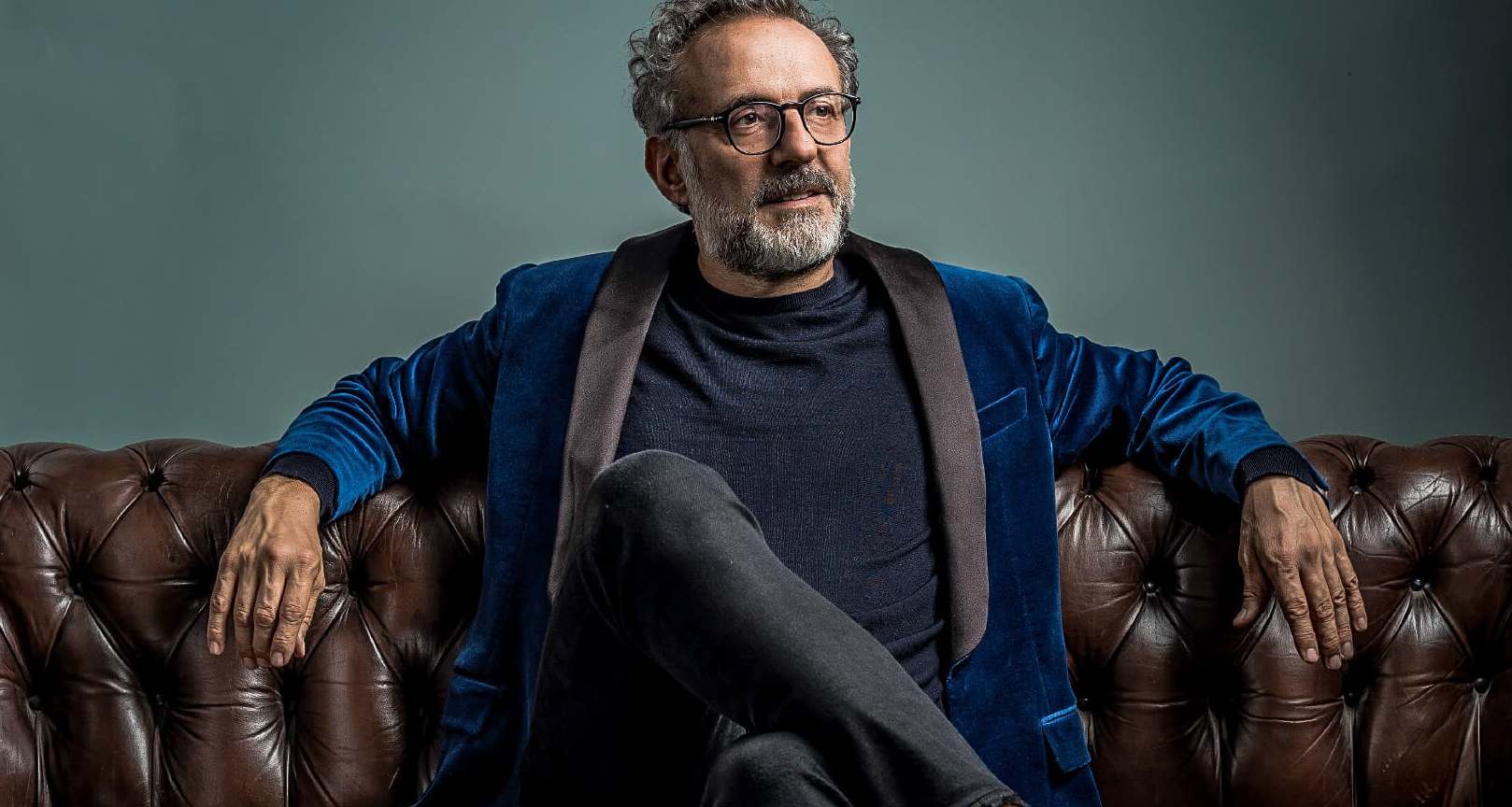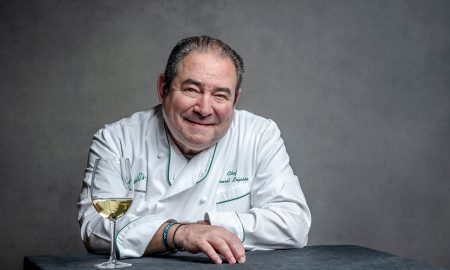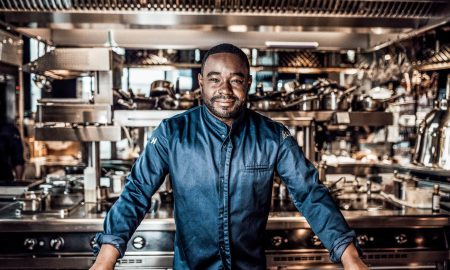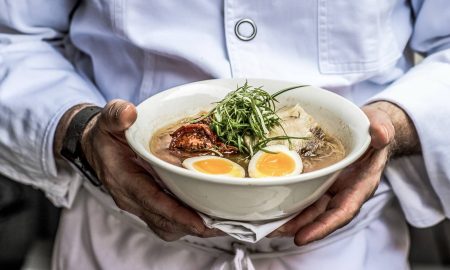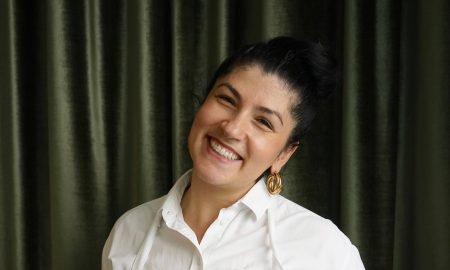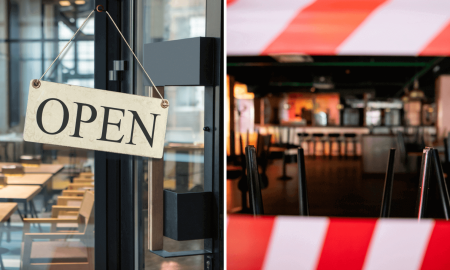Massimo Bottura’s resume:
Born in 1962 in Modena, Massimo Bottura is one of the most famous chefs and restaurateurs in the world. In 1986, after dropping out of law school, Bottura opened his first trattoria in a village in Emillia-Romagna. Alain Ducasse happened to stop in for a meal, and wound up offering Bottura an internship at his restaurant in Monaco. From there, Bottura went to New York, where he met his future wife, Laura Gilmore. In 1995, he returned to Modena and opened Osteria Francescana; the restaurant received its third Michelin star in 2011, and topped the World’s 50 Best Restaurants list in 2016 and 2018. In 2019, Time Magazine named Bottura as one of the 100 most influential people in the world.
A powerful figurehead
Massimo Bottura is the founder of, and culinary mastermind behind, Osteria Francesca – which many people consider the world’s best restaurant. The culinary Mecca reached number one on the esteemed World’s 50 Best list twice, and has had three Michelin stars since 2011. Along the way, Bottura also started Food for Soul, a revolutionary non-profit soup kitchen like none other. Bottura’s an ambassador for the UN Environment Program as well as a spokesman for Gucci and Maserati—a contradiction that’s either awkward or fascinating, depending on your perspective. Either way, the question isn’t who Massimo Bottura really is anymore; it’s what he symbolizes. An exemplary child of his time who embodies the ever-changing role of the 21st-century chef like no other? Or a jet-setting celebrity who’s not part of the culinary scene anymore?
It’s 2:10 PM. So our phone interview with Massimo Bottura is supposed to be well underway. His line’s busy, though. He finally calls back a little before three, sounding equal parts agitated and euphoric. Which we suppose we would be, too, if we’d just spent the past hour on the phone with the Prime Minister of Italy. COVID, aid packages, the future of food service… they really got down to brass tacks.
Sieh dir diesen Beitrag auf Instagram an
Massimo, how did that phone call with the Prime Minister come about?
Last November, an open letter I wrote to our Prime Minister was published in Corriere della Serra, a major Italian daily paper. See, in March of 2020, I only received €600. After that, all I got was what we call cassa integrazione, government assistance for my personnel costs – but that money didn’t arrive until six months later. In other words, I had to pay all of my employees their full salaries for six months, just on my own. And from the looks of it, we’re not actually going to receive any stimulus payments to cover those expenses—all we can do is deduct them from our taxes. I’m not sure whether I’m going to survive this whole thing. I think I’ll make it work one way or another, but it’s all just completely crazy.
Did the letter have an effect?
Oh, for sure. Thanks to that letter, we aren’t required to prepay our taxes anymore. In Italy, you normally have to pay 40 percent of your taxes for the coming year in December. For a business like mine, that would be disastrous in times like these. So we’re trying to stay optimistic, trying to stay busy, and trying to create something special despite everything so that we can get through this craziness.
What exactly are you working on these days? Can you give us a couple of examples?
I used 2020 to invest in Casa Maria Luigia. We purchased new properties so that we could create an even richer and more interesting overall guest experience – athletic facilities, art exhibit spaces, and so on – and we really got the whole bed and breakfast into tip-top shape. We also worked on all the set menus, which is something we probably never would have gotten around to otherwise. Over the summer, we presented our Beatles menu, which was inspired by the legendary Sgt. Pepper’s album. The feedback we got from that was amazing. A few journalists that had eaten at Francescana often said it was the best set menu they’d ever had there. So after 25 years, despite the circumstances, we’re still finding ways to outdo ourselves, to keep getting better and better. Other than that, preparations for our Ferrari restaurant in Maranello are well underway – it’ll probably be opening in late spring. And a new Gucci location will be opening in Japan, most likely in summer. As for the refettorios, they’re now offering to-go meals to the poor, homeless, and refugees. We’re renovating and investing in our San Francisco and New York locations. So as you can see, we’re working, working, working.
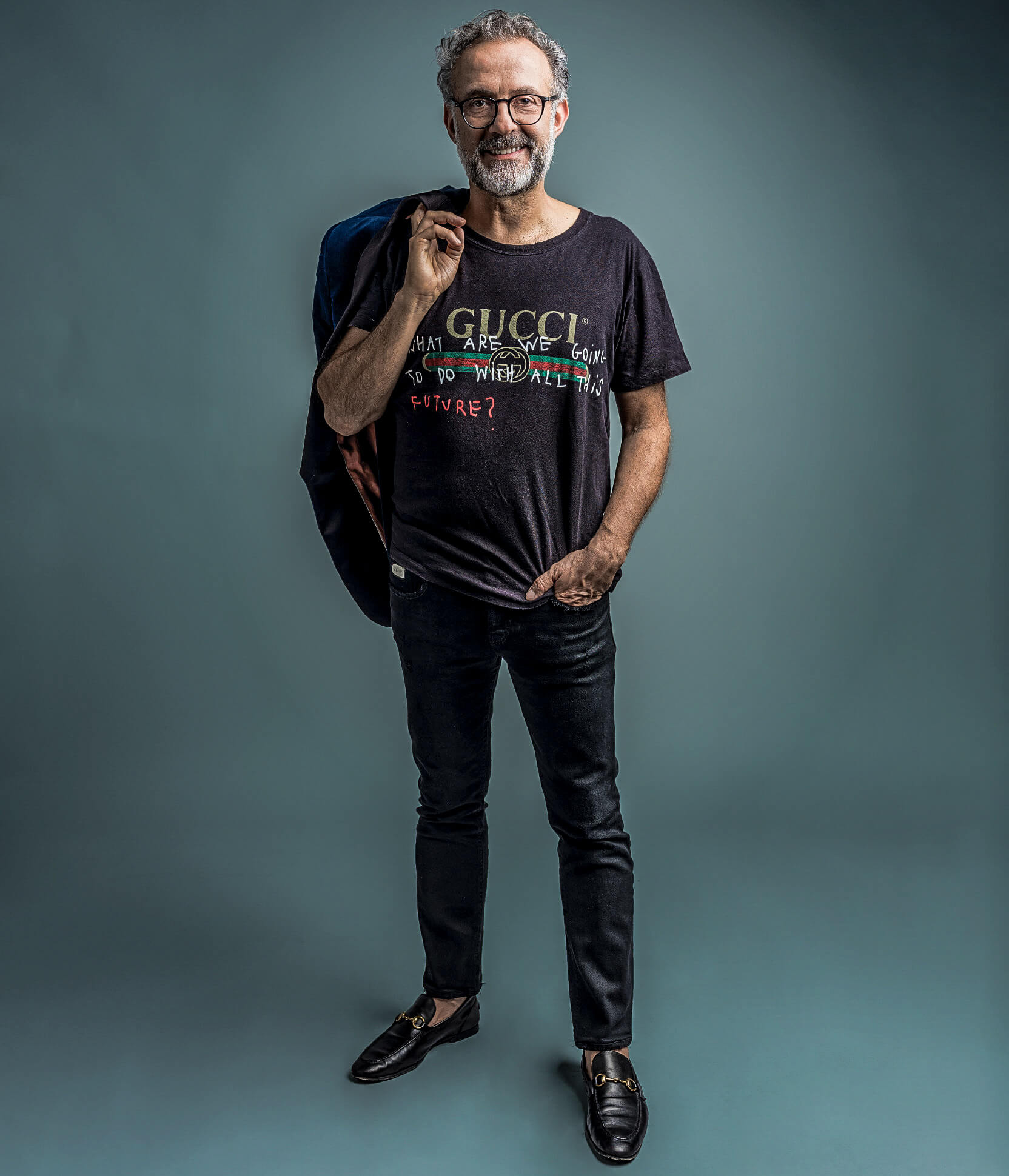
Massimo Bottura | Image: Raphael Gabauer
Let’s get back to your roots for a minute. You opened your first restaurant in 1986.
No, that wasn’t a restaurant! It was just a little trattoria, a couple kilometers from Modena, in a village of ten people. It was the cheapest thing in the world, but it was all I could afford. A week later, I was in the kitchen. With an old woman named Lydia Cristoni. She was the one who taught me everything. She showed me how to organize a kitchen. But she also taught me something else, something much more important, which is how to make a restaurant feel like family. Including for the staff. She was the reason that we started eating lunch and dinner together at Osteria Francescana, at 11:45 AM and 4:45 PM before service. We still do it today. We use that time to chat, to argue, to make up… and, of course, to shape the future. Those are the ideas she really burned into my brain.
And then something happened that I suppose none of you expected: a certain Alain Ducasse showed up at this little trattoria in the middle of nowhere…
It was like this: another chef, Georges Coigneier, had a restaurant nearby. Between 1986 and 1992, when I wasn’t working at the trattoria, he taught me classical French cooking. It was thanks to him that I learned to blend traditional Italian cuisine with French elements, particularly sauces. Apparently Alain Ducasse was interested in what I was doing there. Once he’d finished eating, he called me over to his table and invited me to come cook at the Hotel de Paris in Monaco. That was in November. By January, I was in Monaco.
Sieh dir diesen Beitrag auf Instagram an
That combination of Italian cuisine and French technique is still a key aspect of your cooking style. So a lot of people say that you’ve “deconstructed” Italian food. Would you say that’s true?
Completely false. Anyone writing that doesn’t understand my food at all. They probably didn’t analyze the dishes precisely enough. Personally, I think I’m reconstructing Italian food, not deconstructing it. When I serve the cheese crust of the lasagna, I’m saying that this is the most emotional part of the lasagna. When a mother comes to the table with a tray of lasagna, the kids fight for every last bit of that crust. The rest is for the adults. In my view, feeding people something that emotional has nothing to do with deconstruction. One thing’s true, of course: I tend to view the past with a critical eye, not a nostalgic one. But I still try to elevate the best things about the past into the future. In a nutshell, that’s what I do.
After you finished your time with Ducasse, instead of returning to Modena and advancing your culinary career, you went to New York. Why?
It just seemed like the right moment… I dunno… New York has always been New York to me. I’ve been crazy about art all my life, so I always thought of New York as the center of everything. A blues singer can run into Damien Hirst there. Jane Cramer can meet Cindy Sherman. At the time, I found that fascinating, because it makes sense in a way.
That’s also where you met Laura Gilmore, whom you later married…
She was the one who opened my eyes to the complexity of art, partly because she taught me to dig deeper: You can’t understand a lot of contemporary works without knowing their predecessors from centuries past. It’s kind of like fishing. If you just stay on the surface, you’ll never catch the right fish. You have to go deeper, to dig your heels in. And sometimes you’ve just got to be patient. The same goes for ideas: some ideas seem brilliant when you first have them, but they can become completely irrelevant just as quickly. Like, devoid of content. Other ideas, you have to fight for, you have to spend a lot of time on. Those are often the ones that really bear fruit.
Would you say that philosophy is reflected in your food? Or your projects?
Take “Five different ages of parmeggiano in five different textures and temperatures,” one of my signature dishes. The first version had three different textures and temperatures. In the beginning, people were saying that I was destroying the image of Parmigiano Reggiano. About 20 years later, after the dish had gone through a few stages of development, it was declared Italian gastronomy’s dish of the decade. I think there’s an important lesson for the younger generation in there: fight for your ideas, don’t listen to other people too much. And more than anything, believe in yourselves.


